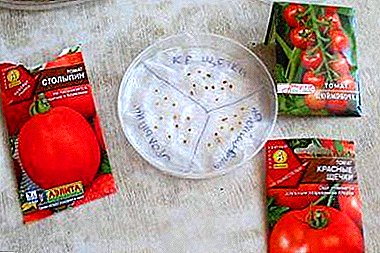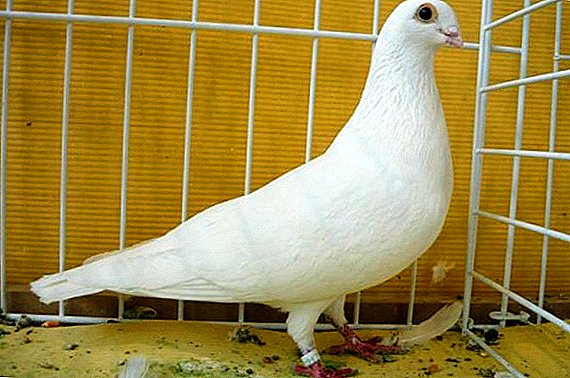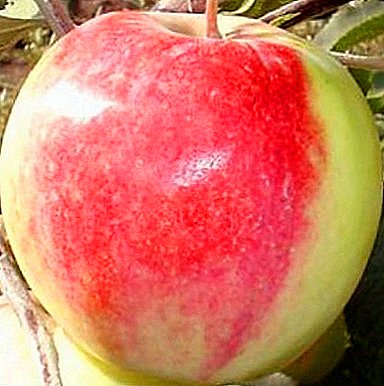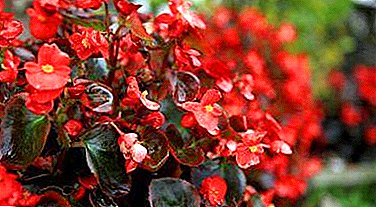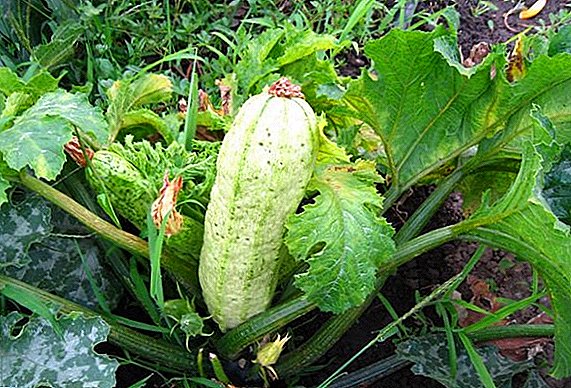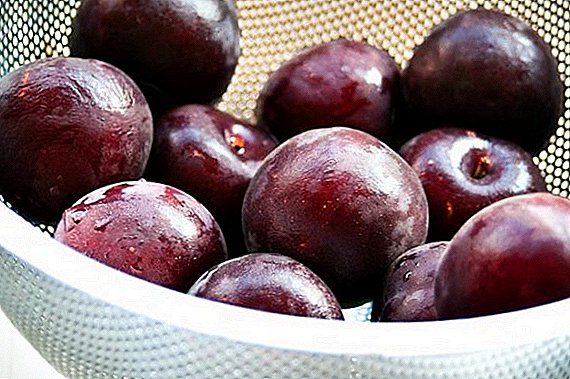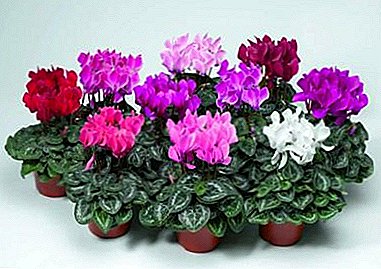
Persian cyclamen is most often grown as an indoor and greenhouse pot plant. Its decorative foliage, bright flowers have long attracted flower growers, which do not stop the difficulties arising from the care of him.
The undoubted advantage of Cyclamen Persian is that it blooms in winter, when there are not many flowering plants. Most often it is used one-time, similar to a bouquet, since Persian cyclamen refers to ephemeroid plants. Its life cycle is divided into two distinct periods: rest, lasting up to 9 months, and growth and flowering, continuing the rest of the year.
The appearance of the plant and its appearance with a photo
Cyclamen Persian, known to flower growers as Alpine violet, Dryakva - perennial tuberous root herb from the genus Cyclamen of the Marcin family (according to some botanical classifications - Primrose).
Below you will see a photo of Cyclamen Persian:





Origin
The homeland of the plant is called the Eastern Mediterranean, but the area of its distribution is much wider and includes - Northeast Africa, the Middle East, Spain, and Ukraine.
History reference
The first began to grow Cyclamen Persian in their homes and gardens of the Romans, which he owes its distribution as a houseplant in Europe. Since then, a lot of its varieties and hybrids, a wide variety of shapes and sizes, which are successfully used in the interiors of offices, winter gardens, apartments, have been developed.
When transplanting and caring for cyclamen, care should be taken - its tubers, flowers and flower stalks are poisonous. Keep tubers out of the reach of children and pets..
Botanical description
Persian cyclamen in height reaches 30 cm, although miniature (up to 15 cm) and medium-sized (up to 20 cm) varieties and hybrids are known.
 Tubers are rounded-flattened (4-15 cm in diameter) with a single point of growth. Radical collected into a rosette heart-shaped leaves with a diameter of up to 14 cm, with a leathery surface attached to the fleshy stem with elongated reddish, brown-green petioles. Silver-colored streaks, which form an exquisite pattern, give a special decorative effect to dark or bright green leaves.
Tubers are rounded-flattened (4-15 cm in diameter) with a single point of growth. Radical collected into a rosette heart-shaped leaves with a diameter of up to 14 cm, with a leathery surface attached to the fleshy stem with elongated reddish, brown-green petioles. Silver-colored streaks, which form an exquisite pattern, give a special decorative effect to dark or bright green leaves.
The bisexual flowers are radial, with five pointed, in some varieties of fringed, large (up to 5 cm) petals, bloom on long (15-20 cm) peduncles. The lower petal is curved back, giving the flower a resemblance to a butterfly. The colors are varied - all shades of white, pink, lilac, red, burgundy, purple, purple, lilac. During the period of flowering on one plant can bloom up to 100 flowers.
Flowering occurs in the autumn-winter period and, depending on the variety and conditions of detention, lasts from 10 days to several months. Persian cyclamen refers to plants as ephemeroids, dropping foliage and hibernating after flowering.
With proper care, the plant can live at home for 20-25 years.
Conditions of detention
Successful cultivation of Persian cyclamen depends on adherence to maintenance rules. First of all, you need to correctly select the flower in the store.
- Purchase. It is better to buy cyclamen in the period of budding. The more flowers there are on the plant, the better.
In a healthy flower, leaves have a rich green color, without damage, with a good curve. Peduncles strong, elongated upwards.
Tubers should protrude from the ground by half. In the center of the flower should not be gray bloom, signaling the defeat of gray rot.
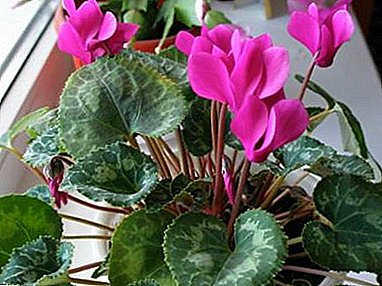 Location and lighting. Best of all, the Persian cyclamen feels in cool rooms on the window sills of windows oriented to the east or west. Light is preferable bright, but diffused. Direct sunlight can cause burns on the leaves. With a lack of light, the leaves begin to turn yellow and wither.
Location and lighting. Best of all, the Persian cyclamen feels in cool rooms on the window sills of windows oriented to the east or west. Light is preferable bright, but diffused. Direct sunlight can cause burns on the leaves. With a lack of light, the leaves begin to turn yellow and wither.- Temperature. For long flowering cyclamen need coolness. Daytime temperature within + 12-16 ° C, night + 10 ° C. When the temperature rises above + 20 ° C, the plant begins to prepare for the rest period - discards color, the leaves begin to turn yellow and fall off.
It should be borne in mind that cyclamen does not tolerate sudden changes in temperature and drafts. During the rest period, the plant is kept in a room with a constant temperature of + 12-25 ° C.
- Humidity and air quality. Persian cyclamen requires a high or medium level of humidity. To maintain an optimal indicator, the air around the plant is regularly sprayed, trying not to fall on the flowers, and the pot is placed in a tray filled with wet pebbles (expanded clay).Cyclamen does not tolerate polluted air, tobacco smoke. He needs constant access to fresh air, so the room is often ventilated without creating a draft, and the pots with flowers are set at a rather large distance from each other.
To improve the process of photosynthesis, dust from the leaves is removed with a soft brush.
- The soil. Ready mixes for bulbous plants, a mixture of fertile garden land with river sand, a mixture of leafy earth (3 parts) and taken 1 part of humus, sand and peat will be suitable as a soil mix.
- Watering. In the period of "wakefulness" - uniform, moderate, regular (every other day). The soil should not be overdried or overmoistened.
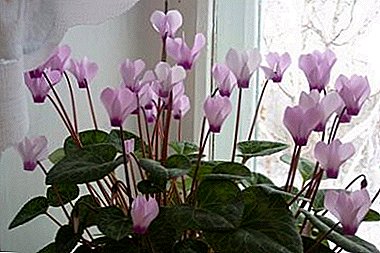 It is best to put the pot with a flower for 15-20 minutes in a pan filled with settled water at room temperature, or gently water the soil around the edge of the pot, avoiding water getting on the tubers and the sheet rosette.
It is best to put the pot with a flower for 15-20 minutes in a pan filled with settled water at room temperature, or gently water the soil around the edge of the pot, avoiding water getting on the tubers and the sheet rosette.During the rest period, watering is reduced to once a week or stopped altogether. With the beginning of the growth of new leaves, the frequency of watering is gradually increased.
- Top dressing. Cyclamen is responsive to fertilizing, fertilizers are applied:
- 20 days after planting (transplant);
- during the regrowth of new leaves, with regularity once every 10-14 days;
- During budding and flowering, complex fertilizers with a high phosphorus content are used every two weeks.
Home care
How to care at home? When caring for him, the specifics of his life cycle should be taken into account - the presence of a phase of active growth (flowering) and a dormant period.
During the resting phase
After the end of the active growth phase, wilted flowers are carefully removed from the plant.. Crop them is not worth it, it can injure the plant. Flowers gently twist at the base of a sharp movement. Leaves do not pick off, so as not to damage the tuber, they fall down themselves. Watering is gradually brought to a minimum.
Once in the pot one tuber can be:
- Take out the pot with cyclamen in the garden or on the balcony, setting it in a dark place, occasionally watering to prevent the earth coma from drying out. In August-September, the plant is returned to its original place and increase the number of waterings.
- Dig a tuber, wrap in thick paper and put in a box for vegetables in the fridge until autumn. At the end of the summer, the "canned" tuber is taken out and planted.
- Watering is gradually reduced, until the complete cessation. After the last leaf fall, the pot with the remaining tuber is laid on its side. In July and August, the plant is transplanted, watering resume.
With proper care, cyclamen blooms again in 2-3 months.
Transfer
 With the beginning of the regrowth of new leaves, it is desirable to transplant the plant. The transplant algorithm is simple:
With the beginning of the regrowth of new leaves, it is desirable to transplant the plant. The transplant algorithm is simple:
- A wide pot is chosen that is 2–3 cm larger than the diameter. In a too large container, the plant has fewer buds, the flowering becomes less luxuriant and long lasting.
- The drainage layer and the prepared soil mixture are poured into the pot.
- The rhizome is carefully excavated, the ground is shaken off, leaving a part on the tuber. Tuber 2/3 buried in the ground.
- After transplantation, before the beginning of flowering, complex mineral fertilizers for flowering plants are applied twice a month.
Common diseases and pests
Persian cyclamen suffers from gray mold and fusarium wilt. From Fusarium, the plant is watered with a 0.1% solution of Fundazole and sprayed with Topsin-M foliage. If gray rot symptoms are detected, systemic fungicides are used.
When attacking insects, pests (red spider mites, cyclamen mites, aphids, thrips, elephant beetles, scale insects) use acaricides and insecticides (Fitoferms, Aktellik, Aktar).
Breeding
Most modern cyclamens are hybrids.. When growing from seeds, varietal characteristics are lost, the plant becomes shallow, the activity and duration of flowering is reduced.
In addition, the seminal method is laborious. For a start, the plant is artificially pollinated, then the seeds are collected, calibrated, Treated, and sown on seedlings. Seedlings, in turn, dive, feed, harden and only then planted. A plant obtained from seeds, blooms no earlier than a year, or even two.
The division of the tuber also does not give positive results. Very often, the tuber infects gray mold and the plant dies. The easiest way is to purchase seeds, tubers or a new plant in a store.
Similar flowers
 Persian cyclamen is similar to other representatives of its kind (African, elegant, Balearic, Cypriot, Greek, Colchian, Lebanese, ivy, amazing, Turkish, Somali). However, it is most often confused with purple (European) cyclamen. The easiest way to distinguish these two species by leaves is that in the European species the lower side of the leaf blade is reddish in color. European cyclamen does not shed its leaves and does not fall into a state of rest..
Persian cyclamen is similar to other representatives of its kind (African, elegant, Balearic, Cypriot, Greek, Colchian, Lebanese, ivy, amazing, Turkish, Somali). However, it is most often confused with purple (European) cyclamen. The easiest way to distinguish these two species by leaves is that in the European species the lower side of the leaf blade is reddish in color. European cyclamen does not shed its leaves and does not fall into a state of rest..
Very similar to the Persian cyclamen of another member of the Primula family - dodecateon. It has very beautiful small flowers with inflorescences with curved petals on high peduncles. The dodecateon, unlike the Persian cyclamen, blooms in summer.
Like the Persian cyclamen, in the winter time hyacinths and Uzumbar violets bloom. The flowers of some hyacinths and Uzumbar violets resemble cyclamen flowers.
Many flower growers consider cyclamen a Persian capricious plant. However, care for him is not so difficult. Lovers plant on their windowsills entire gardens of these plants, pleasing the eye in long winter.


 Location and lighting. Best of all, the Persian cyclamen feels in cool rooms on the window sills of windows oriented to the east or west. Light is preferable bright, but diffused. Direct sunlight can cause burns on the leaves. With a lack of light, the leaves begin to turn yellow and wither.
Location and lighting. Best of all, the Persian cyclamen feels in cool rooms on the window sills of windows oriented to the east or west. Light is preferable bright, but diffused. Direct sunlight can cause burns on the leaves. With a lack of light, the leaves begin to turn yellow and wither. It is best to put the pot with a flower for 15-20 minutes in a pan filled with settled water at room temperature, or gently water the soil around the edge of the pot, avoiding water getting on the tubers and the sheet rosette.
It is best to put the pot with a flower for 15-20 minutes in a pan filled with settled water at room temperature, or gently water the soil around the edge of the pot, avoiding water getting on the tubers and the sheet rosette.
